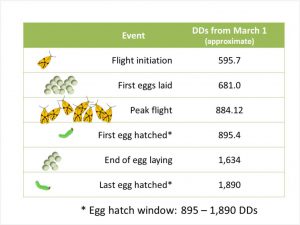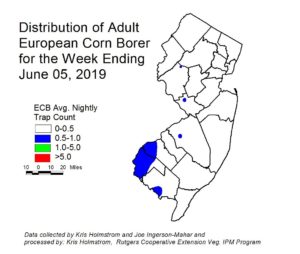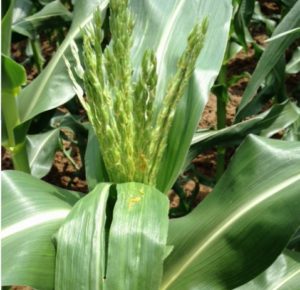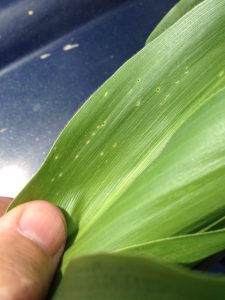The wet spring that New Jersey has experienced this year has brought challenges for many farms in the state. However, this has resulted in a lot of lush early spring grass growth in the State’s pastures and grazing lands. Most pastures look good and no doubt these forage resources can provide a lot of nutrients for livestock.
Most of the pastures in New Jersey are cool-season grass pastures. (Some cool-season grass species are Orchardgrass, Bluegrass, Tall Fescue, Perennial Ryegrass, Timothy, and Reed Canarygrass.) Cool-season grasses get their greatest growth in the early seasons of the year when nights are cool, days are warm, and daylight hours are getting longer. Growth in cool-season pastures will be the greatest during this time and provide the most digestible nutrients for animals to graze. Stocking rates and animal densities can be the greatest during the spring when pastures have their greatest growth; carrying capacity will also be the greatest. If you consider the annual growth of a pasture to be illustrated by a curve, this curve will show the greatest production in the spring and early summer months and the least production during hotter summer months; there will be a rebound in growth in the fall months of September and October, in December through March cool-season pastures will go mostly dormant.
Just before and following birth beef cattle have an increased requirement for energy, protein, and dry matter intake. When calving in the spring, this increase in nutrient requirements coincides with the increased availability of digestible forages during the spring and early summer months.
Managing spring calving beef cattle in the spring and summer months is a bit of a balancing act. The cattle farmer will try to balance the needs of his lactating beef cows and growing calves with the growing and available forage on his spring pastures. As summer approaches, growth of available forages will decline, and animals will receive fewer of their nutrients from growing pastures.
Sometimes early spring grass growth in cool-season pastures is faster than animals can keep up with. When the intake of grazing animals falls behind the rate of growth of pastures then grass is going to be wasted. This grass will grow taller, become stemmy, and provide fewer digestible nutrients. So, a system that matches early spring pasture growth with the needs of animals needs to make sure that the rate of grazing and removal of grasses on pasture keeps up with pasture growth rate. When this is done then the removal of pastures and the growth of animals and maintenance of cows and calves will be optimal. Good pasture management during such periods will include regular clipping and dragging to ensure that high quality grass growth continues. Setting up a rotational pasturing system can also help to maintain optimal pasture quality and availability. Contact your local Cooperative Extension Office for assistance in setting up a rotational pasturing system.
Practically speaking, what does this mean? Early in the spring, pastures can be stocked heavier than later in the summer. Stocking rate could be as many as three or four animals per acre in the early spring when grass is lush, but only one or two when growth is slower in the summer.
Please remember that there will be a second growth spurt of cool-season grass in the fall months. Beginning in September as day length shortens and nights become cooler there will be increased new growth in pastures. The total amount of cool-season grass production will be less than in the spring but greater than the summer months. For a fall calving beef cow herd, this increase in fall forage availability can help to balance increased nutrient requirements of a fall calving cow.
Understanding the manner in which pastures grow and the needs of animals is essential to best balance forage resources with animal requirements.
What about those summer months when there is less available forage? Several strategies may be helpful. First as was mentioned above, pasture stocking rates can be reduced, good pasture management and a rotational grazing system can be implemented, extra hay or feed grain can be fed, or other available crops or forages can be used. It is possible to utilize summer grasses such as Sudan grass or Sudan and Sorghum crosses as a summer forage supplement. These grasses grow best in hotter, summer months and can help supplement livestock needs over the summer months. Usually these grasses are planted in the month of June and will provide abundant growth during July and August. With these summer annual grasses, because of nitrate or prussic acid toxicity during droughts or when frost comes in the fall, it is important not to graze them below 18-24 inches of height and never graze after the first frost in the fall. Please see the following Rutgers fact sheet with information about risks when grazing summer grasses: Risks when grazing summer annual grasses
New Jersey is a small state, but available forage resources can be balanced with the livestock herd’s requirements. If you have questions, please contact your local Cooperative Extension Office to get guidance in setting up a grazing system or in developing a system for grazing animals in hot summer months.
This article was written by Michael L. Westendorf, Ph.D. Rutgers University School of Environmental and Biological Sciences Department of Animal Science. It appeared previously in the May 15 issue of the New Jersey Farmer.





